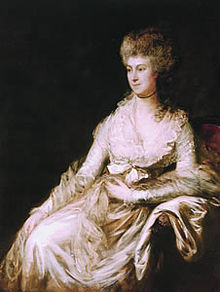A LITTLE HISTORY LESSON...
Before examining the issues in the current climate, it is important to briefly explore the historical context that helps to identify and explain the residual impact. Societal issues which lead to gender inequality and discrimination have long been embedded in the religious institutions, politics, and family systems in Western cultures and therefore women have not historically been afforded the same opportunities as men, in the music world and beyond.
During the eighteenth and nineteenth centuries, women were not allowed to play any instrument that had to be held between their knees or blown with the mouth, as this was considered to compromise their feminine modesty. Women were only allowed to play the instruments that permitted them to demonstrate the culturally popular ideas of femininity while performing, which left them with few options: singing or playing the piano, and subsequently, the violin.
Lili Boulanger (1893-1918)
Women were not allowed to pursue an education in music until the late nineteenth century and were not provided the same courses as their male colleagues. The top ten major European Conservatories founded between 1807 and 1878 — Milan, Vienna, Brussels, Leipzig, Cologne, Dresden, Bern, Berlin, Naples, and Frankfurt — admitted female students, but only under special conditions. Boys and girls received instruction in separate divisions and separate quarters, and the studies for the young girls paled in comparison to those of their male counterparts. It was customarily assumed the girls could only become performers or teachers, and their courses were limited to voice, harp, and piano, while the boys were taught the fundamentals of music so that they could become conductors, composers, musicologists, or critics.
Society as a whole and women themselves could embrace the role of performer because it was considered an activity in which the woman re-created music that a man had already created. In Western culture, the prevailing opinion was that the proper behavior for women was passivity and submissiveness, which meant that talented female composers were routinely dismissed without consideration.
Franziska Lebrun (1756-1791)
Excluding women from educational opportunities in music all but guaranteed their absence from the professional fields in the music world, and this still applies today. In western culture, where the patriarchy is so systemic and endemic, it’s not surprising that symphonies and other music professions have been historically male dominated and that women have been so discouraged to attempt to join in the pipeline, and this also explains why the system is so slow to change.
Some areas find the proportion of women to men growing faster than others. Once an all male affair, there are many orchestras in the world that are now more women than men.
Whereas orchestras and music conservatories are becoming more equal, the field of composition is taking longer to shift.
Professional orchestras, academia, and other music careers won’t be 50% women until education is 50%. Women can’t move up in the world until they are included from the beginning, and it is understandable that this will take a while to shift.

